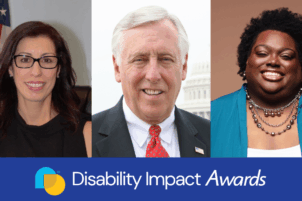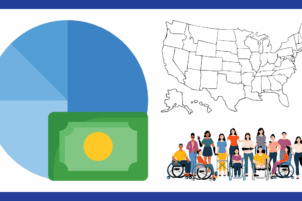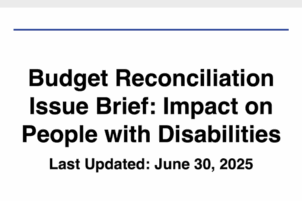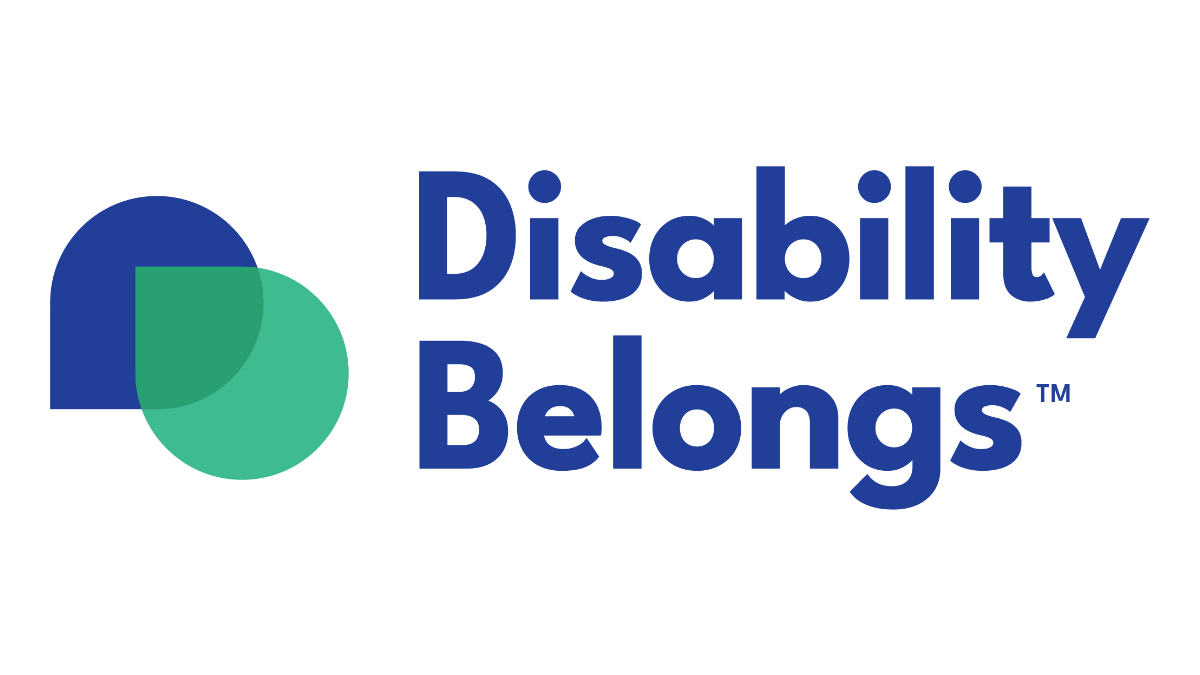Washington, D.C., May 5 – This past week, RespectAbility contributed to the Office of Disability Employment Policy at the U.S. Department of Labor’s online dialogue to solicit ideas, insights, and innovations from the disability community about advancing racial and social equity. This dialogue is only the latest example of how the new Biden-Harris Administration is seeking to address the “entrenched disparities in our laws and public policies.”
On his very first day in office, President Biden signed Executive Order 13985 launching an “ambitious whole-of-government equity agenda that matches the scale of the opportunities and challenges that we face.” This is critical news for the 12.8 million Black, Indigenous and People of Color (BIPOC) with disabilities who have long been harmed by structural racism and who are disproportionately impacted by the COVID-19 and resulting economic crisis.
“The impacts of racism and ableism on Black, Indigenous and People of Color (BIPOC) with disabilities have caused harm to so many,” said Jennifer Laszlo Mizrahi, President and CEO of RespectAbility. “We must all fight racism and prejudice of all kinds. That work must go well beyond words and move into real systems change so we can create true equity and opportunities. Our society is at its best when all people, including BIPOC people with disabilities, can earn an income and become independent, just like anyone else. Online dialogues like this one offer the chance for policy makers and common citizens to make their voices heard and push our society to become fairer and more inclusive.”
The U.S. Department of Labor (DOL) regularly hosts online dialogues to gather ideas, garner insights, and offer the public to be active citizens in the policy making process. From now until May 14, DOL is hosting another dialogue and they are keen to get more public participation in the process. This time, the focus is on reaching teenagers, developing their job skills and promoting workplace safety. You can register for the new dialogue online here.
RespectAbility’s full testimony is presented below:
To: Staff, Office of Disability Employment Policy, U.S. Dept. of Labor
From: The Board of Directors, Senior Leaders and Staff Members, RespectAbility
Re: Submissions to Racial Equity Online Dialogue
Date: May 3, 2021
https://racialequity.ideascale.com/
Idea #1 – Focus on Better Metrics to Improve Racial Equity in Employment
Our communities and our economy is at its best when all people, including people with disabilities, can earn an income and become independent, just like anyone else. Because anyone can join the disability community at any time due to illness, accident, or aging, people with disabilities share intersectional identities with other underrepresented communities and face similar systemic barriers.
However, too often, decision makers focus on the wrong metrics or the wrong goals when seeking to build the economy or implement new policies. This is especially true when it comes to the intersection of race and disability. Data used at the federal, state, and local levels need to track disability and be disaggregated by race so that commitments can be made to improve equity and advance racial justice. Far too many decision makers only pay attention not the overall unemployment rate without looking deeper at disparities in economic outcomes within marginalized communities. For example, the national wide unemployment was only 3.5 percent in 2019. However, if you dig deeper, you will find a far more complex economic picture at work.
Look at the racially disaggregated data captured by the Annual Disability Statistics Supplement.
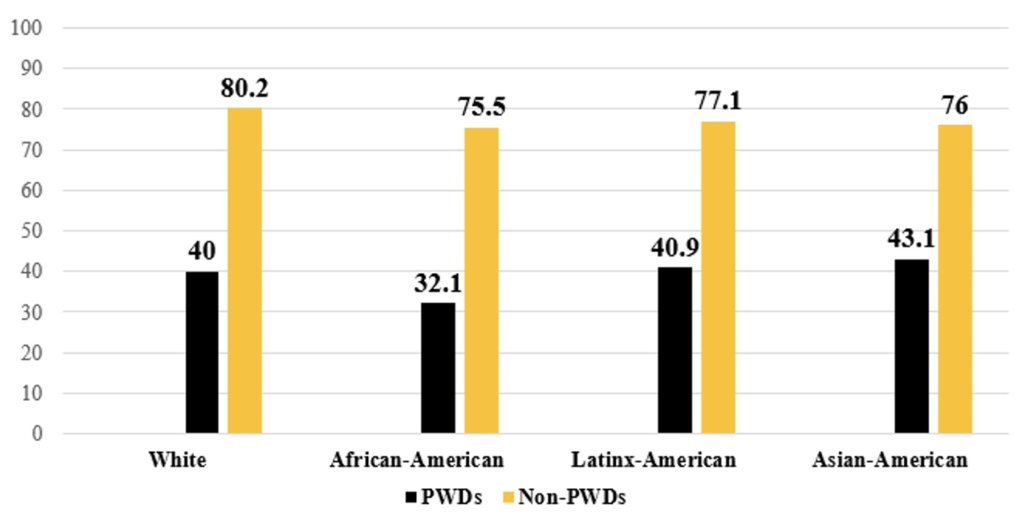
Figure 1- Employment Rates for Working-Age Americans w/ & w/o Disabilities, by Race – 2019 (Pre-COVID)
Source: 2020 Annual Disability Statistics Compendium
In the economic expansion prior to the COVID-19 pandemic, 32 percent of working-age percent of working-age African Americans with disabilities had jobs, compared to 75.5 percent of working-age African Americans without disabilities. That means that there was a 43.4 percentage point gap in outcomes for African Americans with disabilities compared to their nondisabled peers.
Likewise, 40.9 percent of Latinx people with disabilities had jobs compared to 77.1 percent of Latinx people without disabilities, leaving a 36.2 percentage point gap. 43.1 percent of Asian Americans with disabilities had jobs compared to 76.0 percent of Asian Americans without disabilities, leaving a relatively small gap at only 32.9 percentage points. Lastly, 40 percent of white Americans with disabilities had jobs as did 80.2 percent of white Americans without disabilities, a 40.2 percentage point gap in outcomes.
What this means is that embracing racial equity in the workforce development space requires a focus on the metrics that will drive the greatest change. By setting ambitious goals to close the gap in labor force participation rates among marginalized communities, agencies, organizations, and programs will have to adopt new equity goals, embrace new methodologies, and commit themselves to implementing best practices.
Idea #2 – Focus on Closing Gaps in High School Graduation Rates for BIPOC Students with Disabilities
The pandemic has made clear that the nation must transform itself to advance racial justice and make equitable opportunities a reality. Achieving that reality must begin by improving educational outcomes for students of color with disabilities. In public schools across the nation, there are 6.5 million students with disabilities. Out of that number, fully 3.5 million are Black, Indigenous and People of Color (BIPOC) students with disabilities. In addition, 11.4 percent of students with disabilities nationwide (almost 720,000) also identify as English language learners.
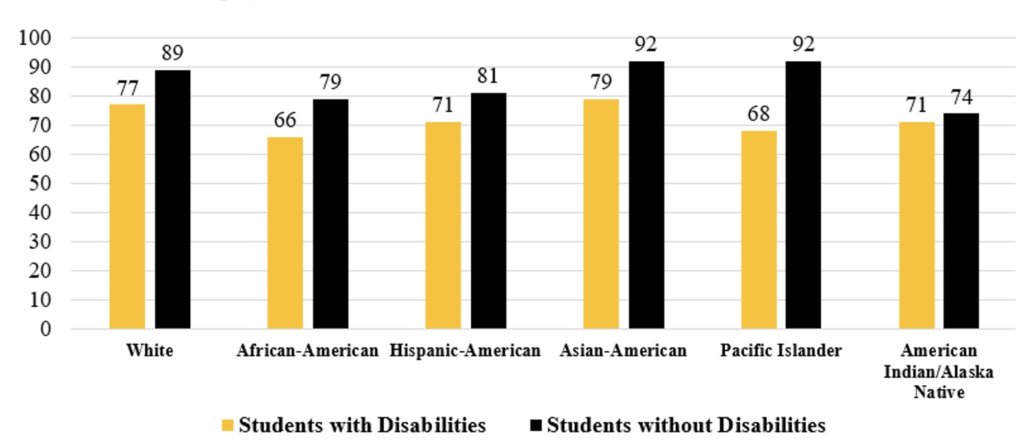
Figure 2: National High School Graduation Rates for Students w/ & w/o Disabilities by Race – Class of 2018.
Source: U.S. Department of Education, Office of Special Education Programs
For many of the 1,158,862 Black students (K-12) with disabilities in America today, the deck is stacked against them. A key part of that is because, due to structural racism, schools are funded by local property taxes which perpetuates a cycle of poverty. Moreover, the Individuals with Disabilities Education Act (IDEA), the most central law which gives students with disabilities rights to special education, was never fully funded. President Biden has pledged to fund fully IDEA and bills to do just that are moving in the U.S. House and Senate. However, without that funding, currently nonvisible disabilities such as ADHD are not diagnosed, and even students who do have a diagnosis and Individual Education Plan (IEP) do not get the supports they need to achieve. Frustrated, they can act out and become suspended. Black students with disabilities are disproportionately impacted by suspension in schools, with more than one in four boys of color with disabilities — and nearly one in five girls of color with disabilities — receiving an out-of-school suspension.
Statistics show that unmet disability needs are a critical factor for many justice-involved youths. Researchers have found that one-third of incarcerated youth need special education services and that in some cases, up to 70 percent of justice-involved youth disclosed a learning disability. As documented by the National Council on Disability, fully “85 percent of youth in juvenile detention facilities have disabilities that make them eligible for special education services, yet only 37 percent receive these services while in school.” Youth of color, including English Language Learners (ELLs), are disproportionality trapped in the school-to-prison pipeline.
Overall, only 67 percent of students with disabilities graduate high school compared to 85 percent of students without disabilities. However, Black students with disabilities face significantly greater challenges receiving a good education from the American educational system.
Idea #3 – Establish a Chief Accessibility Officer of the United States
Designating a Chief Accessibility Officer is a best practice that many companies are starting to adopt and can help drive greater inclusion. The government itself could benefit from a designated officer responsible for coordinating disability inclusion and accessibility internal to the federal workforce.
Such a position has already been articulated in this Dialogue already, however, such a position could be a crucial piece of advancing equity within the Federal government itself. Accessibility means so much more than just improving websites for screen reader software. It means a serious commitment to looking at ways of improving programmatic accessibility across the entire suite of programs that directly impact millions of people with disabilities, especially those of intersectional identities and from marginalized communities that have increased barriers to accessing government services. Taking a “Whole-Of-Government” approach to improving accessibility needs to be part of the Administration’s ambitious racial equity and social justice agenda.
Idea #4 – Develop and Distribute Local Resources Guides Through Multiple Channels to Reach Underserved Communities
While RespectAbility is a national, non-partisan organization, since 2017 we have worked extensively in communities from coast to coast. When interfacing with local organizations working to meet local disability, workforce, and community needs, we have consistently found that local people with disabilities often do not know where to look for supports or services. Whether we are talking about under-resourced neighborhoods in the wider Los Angeles metropolitan area or impoverished boroughs of New York City, people with disabilities and those working in that community often do not know about the wider network of workforce development programs, non-profit agencies, or services they are eligible to access. As such, our organization has devoted much time and many resources to cataloging pathways for people with disabilities to overcome barriers to their employment success.
These have taken form as locally and nationally focused resources including:
- The Long Beach Disability Community Resource Guide
- Finding a Job as a Person with a Disability in Los Angeles – LA Jobs Guide
- Virtual Education & Students with Disabilities Resource Guide
- People with Disabilities at Work – A Resource Guide to Achieving Economic Independence and Inclusion through Employment and Entrepreneurship
- Recursos En Español
These free digital documents provide practical advice and can easily be printed out to share with those who may be experiencing technological barriers in their job search. By ensuring that people with disabilities have the tools to navigate the system and meet their individual needs, we can improve outcomes. Further, each of these resources was developed after inventorying local needs through extensive community outreach and were developed in close cooperation with self-advocate led organizations. Together, we think they offer yet another tool in the equity toolbox.
Idea #5 – Use Community Meetings and Online Dialogue to Drive Policy Innovation and Systems Change Advocacy
In direct response to the early stages of the COVID-19 pandemic and fearing the social isolation created by lockdowns, our organization quickly responded by hosting a series of virtual Disability Community Gatherings to create safe, online, social space for people with disabilities. While all the gatherings were open to anyone, each one had a specific focus on particular affinity groups within the broader spectrum of the disability experience. For example, we hosted specific dialogues for:
- Wheelchair Users (Two Gatherings)
- People with Developmental Disabilities
- Women with Disabilities
- Jews with Disabilities
- Californians with Disabilities
- Millennials and Gen Z-ers with Disabilities
- Low-Vision and Blind Individuals
By listening to these dialogues, we identified both common threads of experiences, but also a critical and immediate advocacy priority. We found that many of the dialogue participants were struggling to safe access groceries due to either trouble maintaining social distancing or out of fear of exposure to the virus in order to use their Supplemental Nutrition Assistance Program (SNAP) in-person at a grocery store. Nationwide, 11 million Americans with disabilities depend on SNAP to put food on their tables. When the pandemic hit, they were suddenly forced to choose between feeding their families and being exposed to a deadly virus.
The staff at RespectAbility quickly launched the #SNAPDeliverySavesLives campaign in late April. Since then, they have reached out to every state, actively encouraging SNAP directors, governors and the federal government to quickly enable people with disabilities to use their benefits online. They have tracked states’ progress as they applied for the USDA waivers. Their work was joined by the Consortium for Citizens with Disabilities (CCD) and numerous governors and senators.
Prior to the pandemic, just six states allowed SNAP users to order food online for delivery. Now, according to statement released by USDA last may: “In less than six weeks, amidst an unprecedented situation, USDA has expanded SNAP online purchasing to 36 states and the District of Columbia – nearly three-quarters of the states, covering 90% of SNAP households.”
By the end of Summer 2020, 47 of the 50 states now offer online grocery delivery for SNAP beneficiaries.
The lesson here is that creating opportunities for those most directly impacted by policies and circumstances to share their views can drive a successful advocacy agenda forward. As such, virtual dialogues such as this forum are crucial tools that need to be leveraged wherever possible to collect, capture, and convert into action key policy changes.
Idea #6 – Equity Webinars that Connect Disability History, Civil Rights Struggles, and Advancing Inclusion
Addressing equity issues and racial justice in the context of workforce development, is critically important, yet many professionals do not know where to begin to where to begin their education on equity issues. For our organization, it begins as part of the onboarding process for new interns and staff. For example, new hires are assigned an extensive reading list to provide them a foundational understanding of racial equity, intersectionality, and social justice issues.
Such training is the necessary but insufficient starting point for embracing an equity agenda in an organization’s efforts. Further training and materials are needed to really turn talk into practice. Our organization hosted a lengthy series of accessibility and equity webinars back in 2019 to help non-profit leaders begin their journeys. Those webinars can be found here.
Lastly, in the wider non-profit space, BoardSource, Nonprofit Quarterly, National Council of Nonprofits, Fakequity, and Nonprofit AF have an extensive catalog of materials for organizations struggling to implement equity-based organizational and cultural changes. More resources are here.
Idea #7 – Advance Equity through Caring Economy Jobs for Diverse Youth with I/DD
In looking for ways to advance equity through greater workforce inclusion, workforce leaders ought to consider programs and best practices that offer young people with disabilities rewarding careers in the caring economy. Focusing on the “Caring Economy” and improving the quality care for older Americans is a key priority for the Administration and there are proven models of transition services that can make a transformative difference for youth with disabilities.
Policymakers should significantly expand the proven Project SEARCH model. Project SEARCH is a transformational school-to-work transition program for youth with intellectual and developmental disabilities that prepares them for good paying careers in hospitals, elder-care and the caring economy. The SEARCH model is a win-win-win for the host employer, the workers with disabilities, and the many older Americans helped by Project SEARCH trained workers. As a model it has already been replicated in 47 states, with dozens of satisfied employers, and hundreds of workers with disabilities earning minimum wage or more. This model is perfectly suited to the challenges of the present and could be expanded widely. There are already SEARCH sites actively placing young people with intellectual disabilities into the workforce in Dallas, Houston, and San Antonio. Other states such as Wisconsin have rapidly expanded the number of Project SEARCH sites to meet the needs of transition age youth with disabilities and other states could easily do the same in the months ahead.
Idea #8 – Support Virtual Cohort Based Models for Diverse, Young Professionals with Disabilities
The past year and the pandemic has made remote work an accepted reality for thousands of workers. This has been a “silver lining” of expanding and normalizing a common reasonable accommodation request long championed by workers with disabilities. Microsoft has dramatically expanded their accessibility features, including built-in speech to text technology which makes it possible for people with even the most limited mobility to use computers. This, along with free instant captioning on Zoom and other breakthroughs, has opened an unprecedented window for people with disabilities to contribute to the success of nonprofits, communities and beyond. Remote work also has great promise at expanding apprenticeship programs into more diverse sectors of the American economy, especially the knowledge economy. RespectAbility has retooled our own National Leadership Program from being a cohort-based, Washington D.C.-located internship program into an all-virtual, work-from-anywhere skills-based training program. Such approaches have major implications for efforts to train workers for good paying jobs in the knowledge economy and the non-profit sector.
Now, it is critical to note that as part of our organizational evolution and program development, we have grounded our fellowship program in a thorough curriculum that reflects lessons learned on implementing an equity based organizational culture. From using preferred pronouns, to recruiting candidates from diverse secondary education institutions, we have striven to offer our program to the widest, most diverse pool of candidates with disabilities that we can possibly recruit. We have learned and documented valuable lessons that can easily be replicated in other venues and for other virtual, cohort-based workforce programs.
Idea #9 – Focus on Encouraging and Diversifying Disability Owned Businesses
In the pre-pandemic era, job seekers with disabilities were already turning to self-employment in far higher numbers than their non-disabled peers. For many, they did so because being your own boss and owning a small business served as an end-run around the barriers to employment that hold back far too many people with disabilities. In looking at the issue of self-employment and promoting entrepreneurship among people with disabilities, special attention should be directed to the equity issues of access to capital and systemic racism. Several disability organizations have been advocating for the inclusion of people with disabilities as a specific category under the rules of the Community Reinvestment Act (CRA) and to advance racial diversity in the entrepreneurship space. Now it the appropriate time to begin digging deep into that work as an equitable workforce strategy.
Iowa’s Vocational Rehabilitation agency has embraced the current crisis by adopting a range of new virtual strategies, approaches, and procedures for providing high quality workforce service even amid a virtual pandemic. Some of those innovative approaches, have major implications for the future of VR. Iowa quickly invested in the technological infrastructure to provide virtual services statewide, adopted a cohort-based model for fostering social connections among VR clients on Zoom and tested other emerging practices throughout 2020. Many other states could learn from the innovations and ideas tested by Iowa and Iowans with disabilities. Iowa VR has embraced entrepreneurship and self-employment as one of the key virtual services provided to the youth with disabilities that they serve. This is a topic that merits deeper attention as the nation looks for innovative solutions to the challenge of building back better.
Idea #10 – Leverage Community College Resources to Improve Employment Outcomes for Students with Disabilities
Community colleges are crucial pieces of the nation’s workforce development infrastructure and in many states, community colleges help direct the investment of WIOA dollars in programs or agencies. State and local Workforce Investment Boards can build sector partnerships that leverage community colleges and other education and training providers to develop career pathways that align workforce supply and demand. WIOA emphasizes the value of recognized postsecondary credentials, and the attention given to career pathways in the act provides a way for community colleges to contribute to the growth of skilled and credentialed workers in their local areas. Community colleges in California received state funding for Disabled Student Programs and Services (DSPS) to assist in providing support services and educational accommodations to students with disabilities so they can have full and equitable access to the community college experience. Part of the community college experience can include job training and readiness. The Rehabilitation Act of 1973 (Act), as amended by WIOA emphasizes the provision of services to students and youth with disabilities to ensure they have opportunities to receive the training and other services necessary to achieve competitive integrated employment. It also expands the population of students with disabilities who may receive services and the kinds of services that the VR agencies may provide to youth and students with disabilities who are transitioning from school to postsecondary education and employment. Making the connection /partnership with Disables Student Programs across every state with WIOA Eligible Training Provider programs at community colleges creates a pipeline of trained /certified workers with disabilities ready for the local competitive integrated job market.
Idea #11 – Fight Stigmas by Embracing the Power of Story Telling and Role Models
Moving the nation to become more equitable for underrepresented communities and dismantling systems that create marginalization requires a transformation in culture, practice and the economy. It requires the courage and commitment of every American, the adoption of policies to end disparities, as well as a culture that embraces diverse stories that reflect the full the African American experience and the intersectionality of the disability community.
Some celebrities and business leaders are using their voice to share their stories, educating people about both visible and nonvisible disabilities. They are defying the statistics and have remained highly successful with their disabilities. These role models make a big difference in setting high expectations for youth with disabilities. People with disabilities of all backgrounds can be amongst the highest achievers on earth. Harriet Tubman had Epilepsy, actress Halle Berry lives with diabetes, business leader and Shark Tank superstar Daymond John is dyslexic and Stevie Wonder is blind. Poet laureate Amanda Gorman, who had a speech impediment, recently shared her genius both at the inauguration and at the Super Bowl. Each of them is a positive role model for success.
Further, what people see on-screen impacts what they think, feel, and do. This includes perceptions around if employers are willing to even imagine hiring qualified people with disabilities. Stigma dampens disability employment in every employment sector. However, our previous success with placing participants in employment at major Hollywood studios has shown that people with disabilities are just as capable as people without disabilities – and when it comes to advocating for accurate representation, even more so. And by showing people with disabilities on screen as individuals who are capable in a variety of careers, we can impact employment broadly.
The best source of accurate portrayals is authentic real-world experience, so there is a virtuous circle: increasing the number of people with disabilities working in the entertainment industry leads to more diverse and authentic representation on screen, further reducing stigma and increasing employment in all sectors. This is a prime opportunity to improve the disappointing statistics because (although the pandemic has put some productions on hold) projects are being pipelined for development. Likewise, more animation projects are being greenlit. Therefore, as writers and animators are being hired, our program will help ensure that people with disabilities are filling these roles to create this systemic change. Despite the pandemic, our proven virtual model provides an opportunity to move the needle in Hollywood.
Even though 25 percent of adults in America has a disability, only 3.5 percent of series regular characters on television have a disability (Where We Are On TV, GLAAD, 2020). In film, there has been no meaningful change in the percentage of speaking characters with disabilities, with just 2.3 percent of characters analyzed in the 100 top-grossing films of 2019 by the USC Annenberg School having a disability. While statistics for disability representation for people working behind the camera are not available, our extensive experience working with the industry confirms the numbers are similarly disheartening.
The representation that does exist is misleading. Almost all portrayals of people with disabilities in media are white, but disability impacts all. Anyone can join the disability community at any point and people with disabilities come from all communities – including African American, Asian, Hispanic, Indigenous, LGBTQ+ and other communities. According to Nielsen Research, consumers with disabilities represent a $1 billion market segment. When you include their families, friends, and associates, that total expands to more than $1 trillion. Americans with disabilities represent the third largest market behind Baby Boomers and the mature market.
RespectAbility has worked to track and document role models with disabilities through our #RespectTheAbility campaign. Role Models include:
- Muhammad Ali—Dyslexic Role Model Fought in the Ring and for Racial and Social Justice
- Maya Angelou, Legendary Poet and Civil Rights Activist Who Had a Disability, Inspires Generations
- Halle Berry: Living with Disability While Taking a Stand against Domestic Violence
- Olympic & Disability Champion Simone Biles Makes History While Mesmerizing Many
- La’Rina Carolina: Pioneer Breaking the Inequality Lines Between Deaf and Hearing Societies
- Lois Curtis: One Woman with Disabilities Fight for Freedom for All
- Andrea Dalzell: RN Who Uses a Wheelchair Treating COVID-19 Patients in NYC
- Missy Elliott ‘Works it,’ Serves as Role Model for Young Women with Disabilities
- Deafblind Civil Rights Lawyer Haben Girma Advocates for Disability Rights in Media
- Whoopi Goldberg: Talented Actress, Comedienne and Talk Show Host Lives with Dyslexia
- First Female Deaf African American Lawyer Claudia Gordon, Anti-Discrimination Advocate
- Daymond John: Clothing Entrepreneur and “Shark Tank” Star with Dyslexia
- Actress with Cerebral Palsy Diana Elizabeth Jordan is Veteran of 40 Shows, Shorts and Movies
- Solange Knowles: Grammy-Winning Role Model for African American Performers with Disabilities
- Lachi: NY Music Sensation & Ardent Disability Champion
- Janet LeBreck: Pioneer of Change and Role Model for African American Women with Disabilities
- Tatiana Lee: Changing Media Perceptions, One Modeling Job at a Time
- Pulitzer-Winning Columnist Clarence Page Credits ADHD with Making Him a Better Journalist
- Lauren “Lolo” Spencer on the Importance of Authentic Storytelling
- Harriet Tubman, Legendary Poet and Civil Rights Activist with Epilepsy, Inspires Generations
- Donna Walton Creates Nationwide Movement of Representation with Divas with Disabilities
We also invite you to read these personal reflections from RespectAbility Staff and Fellows and members of RespectAbility’s National Disability Speakers Bureau.
- KiAnna Dorsey, RespectAbility Fellowship Alumna
- Ketriana Hazell, RespectAbility’s National Disability Speakers Bureau
- Andrea Jennings, RespectAbility’s National Disability Speakers Bureau
- Tatiana Lee, RespectAbility Fellowship Alumna and Hollywood Inclusion Associate
- Laka Mitiku Negassa, RespectAbility Fellowship Alumna and National Disability Speakers Bureau
- Nelle Richardson, RespectAbility’s National Disability Speakers Bureau
- Justin Tapp, RespectAbility Fellowship Alumnus
The LGBTQ+ community and the disability community also intersect in significant ways. As such, our #RespectTheAbility campaign has also compiled articles, books and other resources on the intersection of Disability and LGBTQ+ issues. Read profiles of LGBTQ+ people with disabilities:
- Eric Ascher: Gay and on the Autism Spectrum: My Experience Growing Up in the Closet
- Justin Chappell: Advocate for LGBTQ and Disability Rights Sees Politics as Avenue for Change
- Josh Feldman: Deaf Gay Trailblazer in Hollywood Discusses the Importance of Representation
- Frida Kahlo: Role Model for Artists, People with Disabilities and Bisexual Women
- Lenny Larsen: Globetrotting Entertainment Executive Refuses to Be Defined by His Disability
- Ryan O’Connell: Special Creator Breaks New Ground for Disability and LGBTQ+ Representation
- Ben Spangenberg: Having a Visible Disability While Coming Out as Gay
- Daniel: A Reflection on Truth and Acceptance: When Fear Finds a Home
- Lily: Learning About Myself and Coming into My Own
Likewise, our campaign also includes an extensive list of talented Hispanic and Latinx people with disabilities:
- Jeison Aristizábal—CNN Hero of the Year 2016 and Nonprofit Founder with Cerebral Palsy
- Selena Gomez Prioritizing Health, Serving as Role Model for Young Women with Disabilities
- Salma Hayek Sharing Story of Dyslexia, Serving as Role Model for Latina Woman with Disabilities.
- Frida Kahlo Through Art, Role Model for Artists, People with Disabilities and Bisexual Women
- Andrea Lausell Disability Pride & Hispanic Heritage Pride as One
- Demi Lovato Uses Star Power to Fight Stigmas and Advance Opportunities for People with Mental Illness
- Jaime Pacheco-Orozco Passion for Workforce Development Helps People with Disabilities
- Victor Pineda Transforms Rights into Practice in Cities Around the World
- Vincenzo Piscopo Lifts Up People with Disabilities at Coca-Cola and Around the World
- Roque Renteria Uses Comedy and Storytelling to Fight Stigmas Hurting People with Disabilities
- Gina Rodriguez Star of Jane the Virgin Opens Up About Her Anxiety
- Michelle Rodriguez Fast and Furious Actress Cites ADD as Motivation for Success
- Diana Romero Award-Winning Producer with Multiple Sclerosis Continues to Find Success in Hollywood
- Cristina Sanz First Hispanic with a Disability to Win an Emmy Award, Shatters Stigmas
Lastly, as part of our annual celebrations of how the disability community intersects with other underrepresented communities, RespectAbility regularly posts materials celebrating different History Months, many of which can be found here.
Idea #12 – Breaking Down Silos under WIOA and Enforcing Accessibility
The Workforce Innovation and Opportunity Act was intended to break down siloes within the workforce system and to help lift up people with significant barriers to employment. 7 years after WIOA was passed by Congress, many American Job Centers remain physically or programmatically inaccessible to job seekers with disabilities. A 2017 study by IMPAQ found that “63 percent of centers were partially accessible” and only “37 percent of the AJCs achieved a rating of fully accessible.”
Such findings speak to the fact that significant disparities exist in how far the workforce system has embraced the transformative possibilities of serving more and more people with disabilities. Many workforce boards do not yet have representatives from the disability community, nor do they have subject matter experts who are the proven allies of people with disabilities. As such, significant enforcement actions are needed across a spectrum of challenges in order to make the workforce system more accessible and more equitable.
There is no excuse for why any website receiving WIOA dollars is inaccessible, or any training video lacks captioning. Likewise, the ADA is more than 30 years old now, physical inaccessible should be the exception, not the rule. Especially for American Job Centers, serving diverse communities. As such, DOL needs to take a more aggressive stance on enforcement actions against inaccessible website, programs, and agencies. We also hope that further guidance can be issued to encourage workforce development boards to formally or informally formally or informally adopt policies to create board space for people with disabilities or their proven allies. By leveraging such lived experience and subject matter expertise, any board, program or agency can achieve even more with their existing resources.
We recommend that DOL and ODEP call for increased training in everything from workplace accommodation to employment opportunities for people with disabilities, self-employment opportunities for people with disabilities, and digital accessibility for people with disabilities. To be clear, there is no need to reinvent the wheel on this type of training, as the information is readily available from the Job Accommodation Network and Employer Assistance and Resource Network on Disability Inclusion, and is also a topic on which we offer training at RespectAbility.
Idea #13 – A 13th year to close the educational gap left by the pandemic
The pandemic has adversely impacted students with disabilities in the state of Texas. The loss of instructional time has made valuable employment transition skills nonexistent due the pandemic and shortened school year. High school seniors, especially high school seniors with disabilities have run out of time to complete their high school diploma and take advantage of school to work transitional services. In public schools across the nation, there are 6.5 million students with disabilities. Out of that number, fully 3.5 million are Black, Indigenous and People of Color (BIPOC) students with disabilities. In addition, 11.4 percent of students with disabilities nationwide (almost 720,000) also identify as English language learners.
Many these students are high school senior students with disabilities that have missed out on high school completion with the goal to earn a diploma and vital year to gain skills needed for integration into the workforce. There is no make-up year unless one is created. An additional year of schooling or “13th year” is crucial to allow graduating students to succeed and enter the workforce. The pandemic should not deny transition services to this year’s seniors. As education is a civil right in the United States. If students fail to earn their high school diploma, then they will be denied the opportunity to go to college. Numerous studies have demonstrated graduates of college will earn far more than college students who drop out. By far those earning the least our students without a high school diploma. It is imperative that students with disabilities in Texas are given a thirteenth year of schooling to close the gap the pandemic has created and allow them to take advantage of the additional time to complete their high school diploma and take advantage of transitional services to employment for their lifelong success.
Sincerely,
Jennifer Laszlo Mizrahi
Founder, RespectAbility
Nelly Nieblas
Manager of Policy, Advocacy and Engagement, RespectAbility
nellyn@respectability.org
202-288-1588
Philip Kahn-Pauli
Policy and Practices Director, RespectAbility
philipp@respectability.org
202-525-8755

